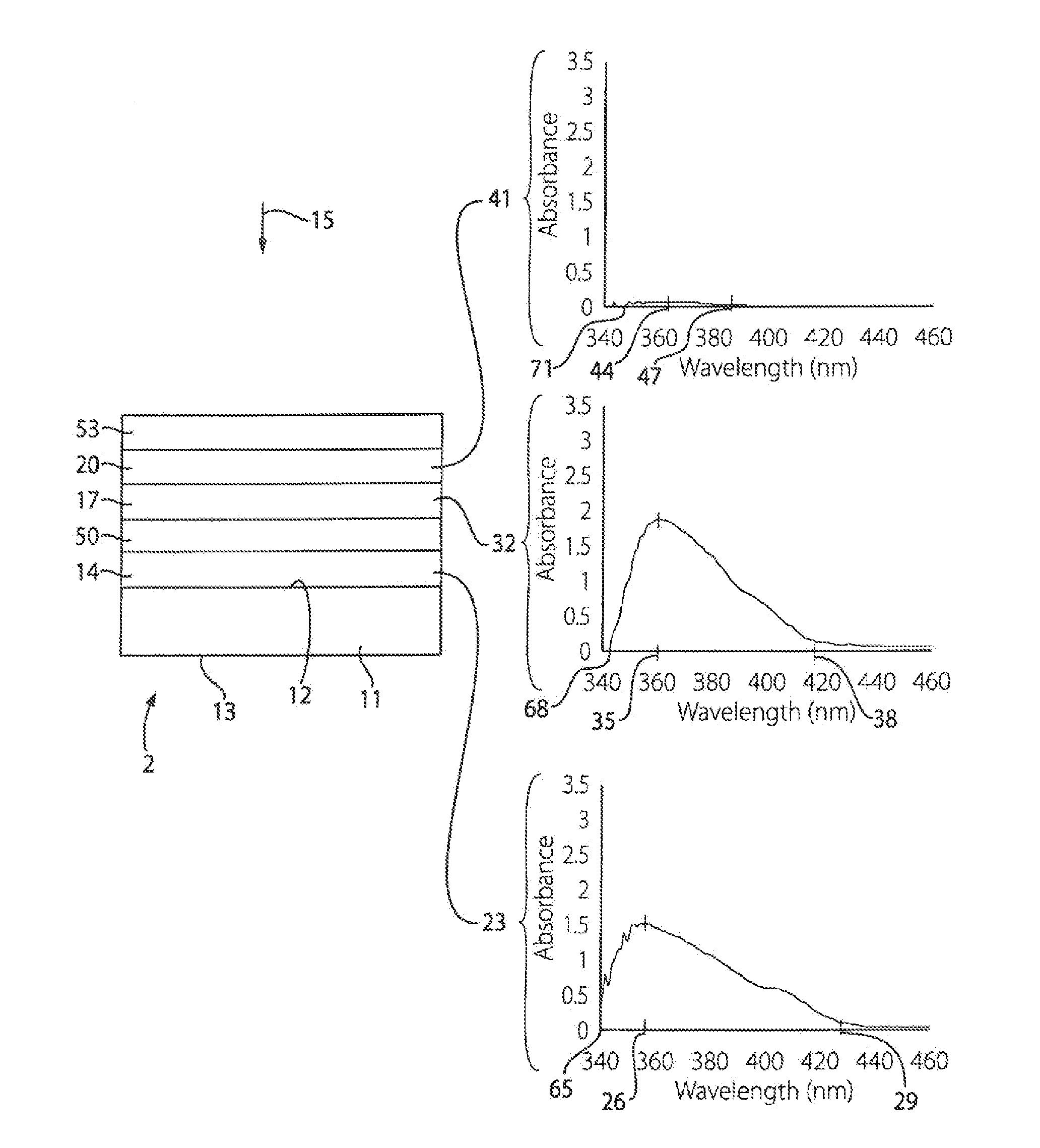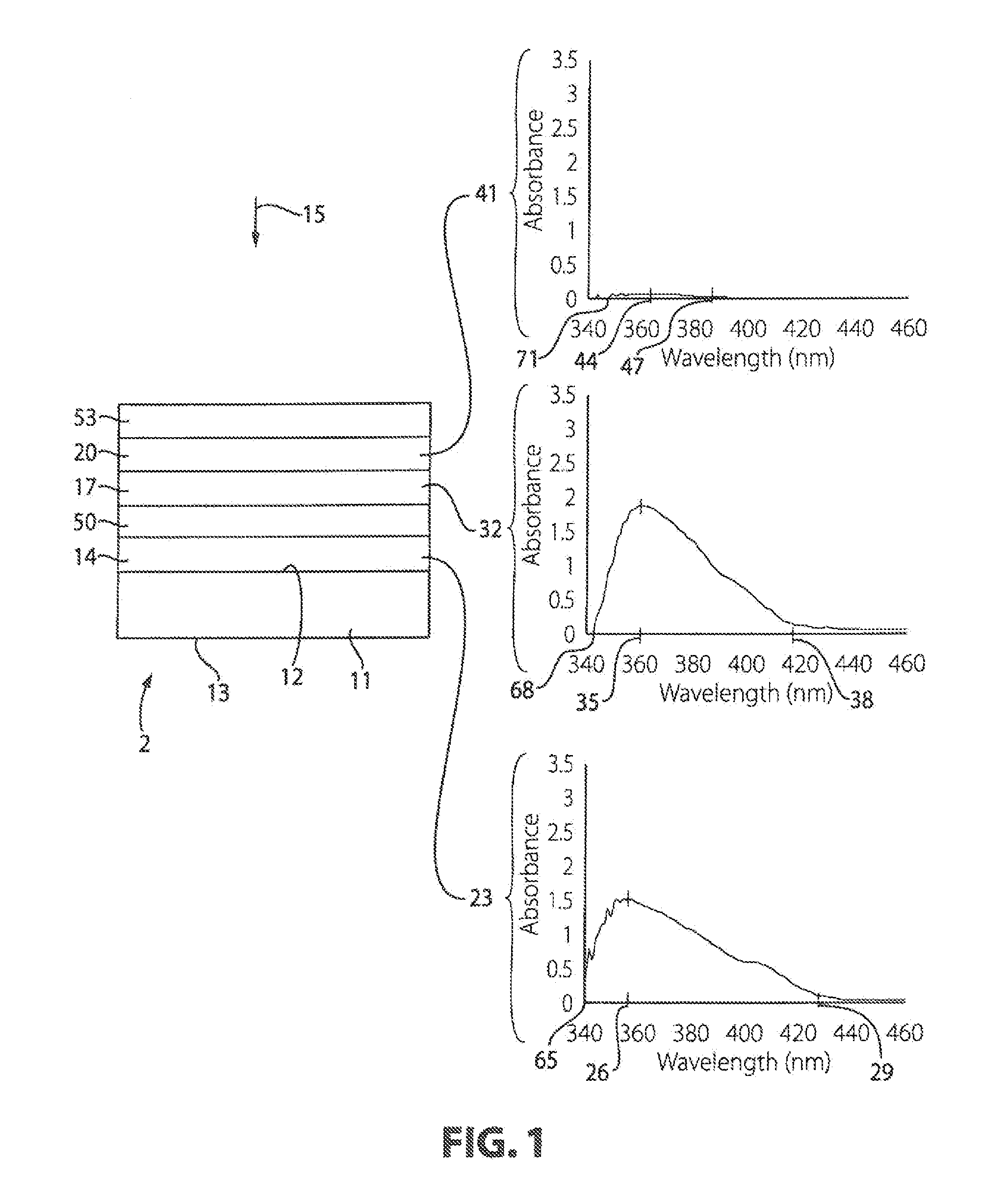Polarizing photochromic articles
a photochromic and polarizing technology, applied in the field of photochromic articles, can solve the problems of conventional photochromic, limited in their ability to store or display information, and not well suited for low-light conditions
- Summary
- Abstract
- Description
- Claims
- Application Information
AI Technical Summary
Benefits of technology
Problems solved by technology
Method used
Image
Examples
examples
[0472]Part 1 describes the preparation of the primer layer formulation (PLF). Part 2 describes the preparation of the liquid crystal alignment formulation (LCAF). Part 3 describes the preparation of the coating layer formulation (CLF). Part 4 describes the preparation of the topcoat layer formulation (TLF). Part 5 describes the procedures used for preparing the substrate and stack of coatings listed in Table 1. Part 6 describes the photochromic performance tests including the absorption ratio and optical response measurements reported in Table 1 for Comparative Examples (CE) 1 to 4 and Examples 1 to 4.
Part 1—Preparation of the PLF
[0473]Into a suitable container equipped with a magnetic stir-bar the following materials were added in the amounts indicated:[0474]Polyacrylate polyol (14.69 g) (Composition D of Example 1 in U.S. Pat. No. 6,187,444, which polyol disclosure is incorporated herein by reference, except that in Charge 2, the styrene was replaced with methyl methacrylate and 0...
PUM
 Login to View More
Login to View More Abstract
Description
Claims
Application Information
 Login to View More
Login to View More - R&D
- Intellectual Property
- Life Sciences
- Materials
- Tech Scout
- Unparalleled Data Quality
- Higher Quality Content
- 60% Fewer Hallucinations
Browse by: Latest US Patents, China's latest patents, Technical Efficacy Thesaurus, Application Domain, Technology Topic, Popular Technical Reports.
© 2025 PatSnap. All rights reserved.Legal|Privacy policy|Modern Slavery Act Transparency Statement|Sitemap|About US| Contact US: help@patsnap.com



